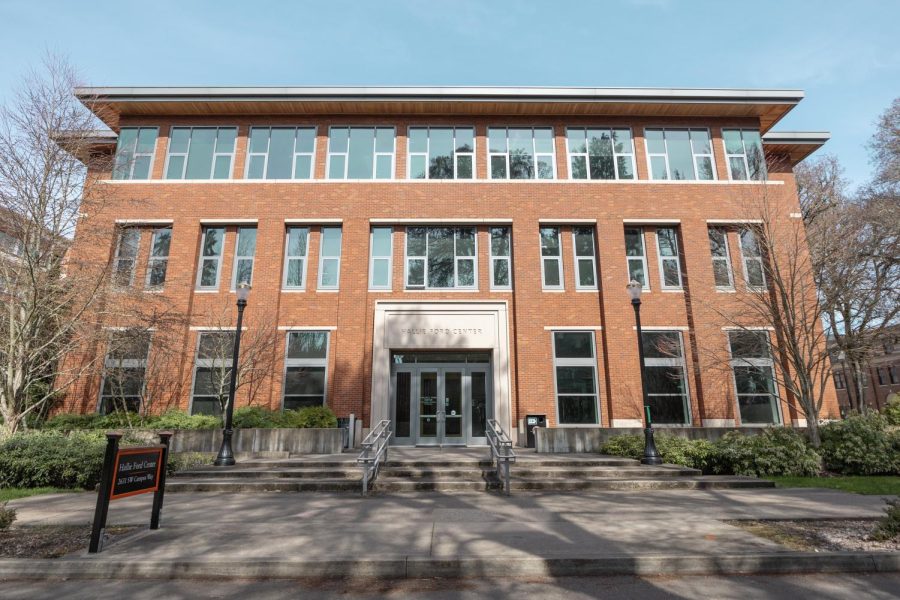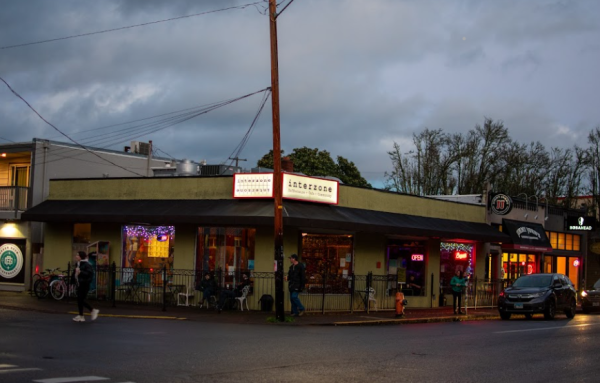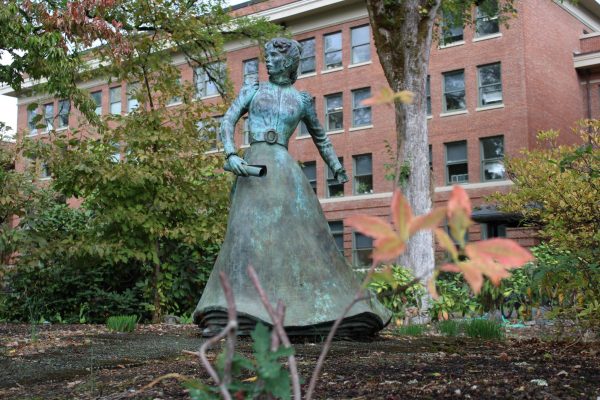OSU researchers hunt for the links between social media and children’s environmental health
Ashton Bisner, OMN Photographer
The Hallie Ford Center on April 11 in Corvallis. The center, through the efforts of senior personnel and selected undergraduate students, is addressing how social media affects developing minds by analyzing tweets relating to children’s environments.
April 17, 2023
Through Oregon State University’s ASP3IRE Center in the Hallie Ford building on campus, a team made up of senior personnel and select undergraduate students is addressing one of the most pressing issues facing the world today: how social media can affect developing minds.
Led by Andrew Larkin, an assistant research professor and developer with the ASP3IRE Center, undergraduate researchers have taken on the task of carefully analyzing tweets for content related to children’s environmental health. Together, the researchers have labeled more than 120,000 Tweets highlighting locations specific to children’s development (such as playgrounds, schools and daycares) and identifying health conditions.
According to Larkin, the social media ecosystem is so difficult to navigate because it is composed of “many diverse groups, perspectives and slang terminology.”
It is up to the researchers to navigate these challenging pathways and follow a specific data-entry process, “labeling” tweets as they pertain to children and environmental factors. The entries, according to Larkin, create datasets that will be used by faculty personnel to generate deep learning models, which will then analyze 1.5 billion Tweets from 2014-2023 related to children’s environmental health.
As it stands, the team’s research results are set to be released with the health research community (both at OSU and beyond) by 2024. However, this does not mark an end to the ASP3IRE team’s research in child health and development in relation to social media.
Inspiration for the project, Larkin said, came partially from the Flint Water Crisis, which ignited discussions about water quality from thousands of people across the country who posted pictures of their tap water and described their feelings, perceptions, behaviors and occasionally symptoms.
“We suddenly realized social media is an enormous opportunity to listen to environmental health concerns and the needs of the 300 million Americans who use social media,” Larkin said.
Senior faculty have been in contact with personnel at Twitter and Meta, who Larkin says are aware of the project. There is a possibility that the deep learning models developed by the research team will be adopted by social media companies as useful tools for both data analysis and content monitoring.
According to Molly Kile, a professor in the College of Public Health and Human Sciences and administrative lead at ASP3IRE, OSU is a unique environment for conducting this kind of research,
“We have experts in these fields,” Kile said. “Data science, environmental health, children’s health … and we like to collaborate with each other. There are also a lot of students that want to get involved with research, so it is a win-win.”
Additional targets for the project include identifying and disrupting health-related misinformation discussed across social media.
“For environmental researchers and practitioners, we’re hoping the ASP3IRE social media project will create a new tool in our toolbox, to improve the health of the communities we serve,” Larkin said. “For the greater Oregon and American populations, we’re hoping that not only will our project improve their health and wellbeing, but also that they feel enabled. Their voices and health needs are being listened to, and their experiences, perceptions and choices matter.”







